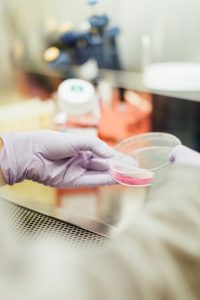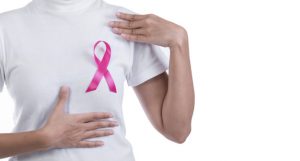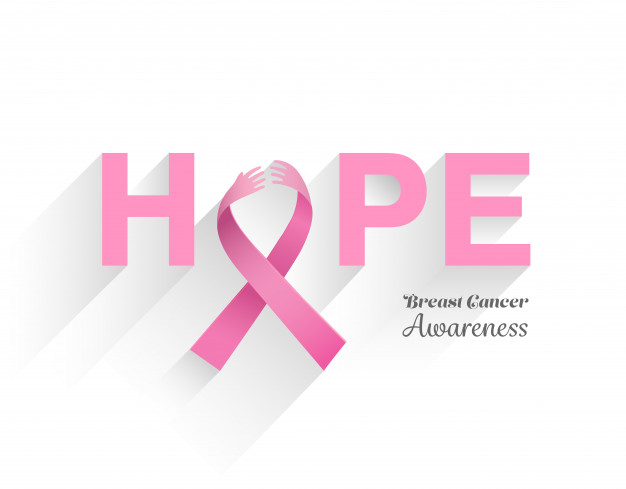Breast cancer is formed when mutations take place in genes which regulate cell growth. These mutated cells divide and multiply in an uncontrolled way. This cancer forms in either the lobules or the ducts of the breast. Lobules are the glands that produce milk, and ducts are the pathways that bring the milk from the glands to the nipple. It can also occur in the fatty tissue or the fibrous connective tissue within your breast. Furthermore uncontrolled cancer cells often invade other healthy breast tissue.
Types of Breast Cancer
There are two main categories.
- Invasive
Invasive cancer has spread from the breast ducts or glands to other parts of the breast.
- Noninvasive or in situ
Noninvasive cancer will not spread from the original tissue.
Common Type of Breast Cancer
Ductal carcinoma in situ – Ductal carcinoma in situ a noninvasive condition. Cancer cells are confined to the ducts in the breast and will not affect surrounding tissues.
Lobular carcinoma in situ – Lobular carcinoma in situ, cancer grows in the milk-producing glands. Cancer cells will not affect the surrounding tissue.
Invasive ductal carcinoma is the most common type. Cancer starts in your breast’s milk ducts and then invades nearby tissue in the breast; it can also spread to other nearby organs and tissue.
Invasive lobular carcinoma it develops in your breast’s lobules and has invaded nearby tissue.
Less Common Types of Breast Cancer
Paget disease of the nipple– This type of breast cancer begins in the ducts of the nipple, it grows to affect the skin and areola of the nipple.
Phyllodes tumor– This very rare type of breast cancer grows in the connective tissue of the breast. Most of these tumors are benign, but some are cancerous.
Angiosarcoma -This is cancer that grows on the blood vessels or lymph vessels in the breast.
Breast Cancer Stages
It can be divided into stages based on how large the tumor or tumors are and how much it has spread.
Breast cancer has five main stages: Stages 0 to 5
Stage 0 breast cancer
Cancer cells remain confined to the ducts in the breast and have not spread into nearby tissue.
Stage 1
Stage 1A: The tumor is 2 centimeters wide or less. Furthermore, the lymph nodes are not affected.
1B: Cancer is found near the lymph nodes, and either there is no tumor in the breast or the tumor is smaller than 2 cm.
Stage 2
Stage 2A: The tumor is smaller than 2 cm and has spread to 1–3 nearby lymph nodes.
2B: The tumor is between 2 and 5 cm and has spread to 1–3 axillary (armpit) lymph nodes.
Stage 3
Stage 3A: The cancer has spread to 4–9 axillary lymph nodes or has enlarged the internal mammary lymph nodes, and the tumor can be any size. Tumors are greater than 5 cm and the cancer has spread to 1–3 axillary lymph nodes or any breastbone nodes.
3B: A tumor has invaded the chest wall or skin and may or may not have invaded up to 9 lymph nodes.
3C: Cancer is found in 10 or more axillary lymph nodes. Lymph nodes near the collarbone or internal mammary nodes.
Stage 4
Stage 4 breast cancer can have a tumor of any size, and its cancer cells have spread to nearby and distant lymph nodes as well as distant organs.
Risk factors
Some risk factors cannot be avoided; Such as family history. However you can change other risk factors, such as smoking. Risk factors for breast cancer include:
- Age – Your risks of developing increases as you age. Furthermore, invasive breast cancers are seen in women who are over the age of 55 years.
- Inherited risk – If a close female relative has had breast cancer; you have an increased risk for developing it. This includes your mother, grandmother, sister, or daughter. If you don’t have a family history of breast cancer, you can still develop breast cancer.
- Drinking alcohol – Drinking excessive amounts of alcohol raises your risk.
- Gender – White women are 100 times more likely to develop breast cancer than white men, and black women are 70 times more likely to develop than black men.
- Genes – Women who have the BRCA1 and BRCA2 gene mutations are more likely to develop breast cancer than women who don’t. Other gene mutations may also affect your risk.
- Hormone therapy – Women who took or are taking postmenopausal estrogen and progesterone medications to reduce their signs of menopause symptoms have a higher risk.
- Never being pregnant – Women who were never pregnant or never carried a pregnancy into a full term are more likely to develop breast cancer.
- Previous breast cancer – If you have had breast cancer in one breast, you have an increased risk of developing breast cancer in your other breast or in a different area of the previously affected breast.
Prevention
Lifestyle factors
Women who are obese have a higher risk of developing breast cancer. Hence, exercise regularly can help you lose weight and lower your risks. Also healthy diet will help. Drinking too much alcohol also increases your risk.
Screening
- Women ages 40 to 44 : An annual mammogram is optional.
- Middle aged Women 45 to 54 : Annual mammogram is recommended.
- Women between 55 and older : Mammogram once every 1 or 2 years is recommended.
Preemptive Treatment
Women are at increased risk of breast cancer due to hereditary factors. Therefor, if your mother or father has a BRCA1 or BRCA2 gene mutation, you’re at higher risk.
Breast Exam
Breast will be examined by a doctor who will be looking at your breasts for changes in size, shape, breasts for any skin changes including rashes, dimpling, redness or symmetry.
Cancer Awareness
However, people today are increasingly aware of breast cancer. Breast cancer awareness efforts have helped people learn what their risk factors.


























